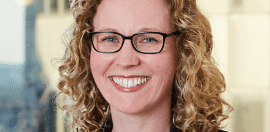Revamped dashboard shows what public really thinks about Australian charities

27 July 2022 at 3:53 pm
The more granular data now available from a key leadership study could help charities and not for profits identify and fix their organisational blindspots.
The Australian Leadership Index’s data dashboard has been updated to allow charities to identify, in greater detail, what the public really thinks of the sector.
The Australian Leadership Index (ALI), a longitudinal study that gathers people’s thoughts on leadership across four key sectors, has launched an expanded version of its dashboard aimed at presenting the data it gathers in an accessible and usable format.
See also: Charities shine bright as leaders for good
The dashboard presents live data on leadership and public integrity for Australia’s institutions, from governments to charities, retail to mining.
Users can search by sector and institution to narrow down the data, and then by factors like integrity, cultural inclusion and environmental impact.
The dashboard also allows users to filter by location, age, gender, life stage, income, education, occupation and voting preference to allow people to find out not just what people think, but who is thinking it.
“Unfiltered” perspectives
The new version of the dashboard provides “granular” insights into public perceptions of leadership for good, ALI co-founder associate professor Samuel Wilson told Pro Bono News.
The researchers behind the project have expanded the number of indicators and institutions the dashboard includes, to provide greater insights.
ALI conceptualises leadership for good as having three fundamental drivers: integrity, competence and contribution. Each of these drivers is informed by around 15 indicators, expanding the amount of data included.
Wilson said the dashboard would allow researchers and not for profits to do more detailed analysis and find different perspectives that support their work.
“We’re trying to really empower people to essentially ask questions and crowdsource their insights and see what their fellow Australians think in a way which is entirely unfiltered,” he said.
Not for profits can also use the data to improve their services, he added, by checking how people rate not for profits on the key indicators and drivers, and aligning their goals and activities with those.
For example, he said, charities are “seen as having good intentions, but they’re not really seen as capable”.
Charities can use this data to find ways to improve the public’s sense of their competence, Wilson explained, by identifying what he calls their “institutional blackspots”.
“There are opportunities that we might find here to actually foster improved reputations for the benefit of these institutions that are serving the public interest,” he added.
“[This] gives people in these institutions the data they need to begin to think about what they can do to not only improve how their organisation is seen to be, but also how their organisation actually runs in practice.”
The new dashboard includes nine months of data and will be added to as the results of the ongoing ALI survey come in each quarter. Users can access the dashboard online.







